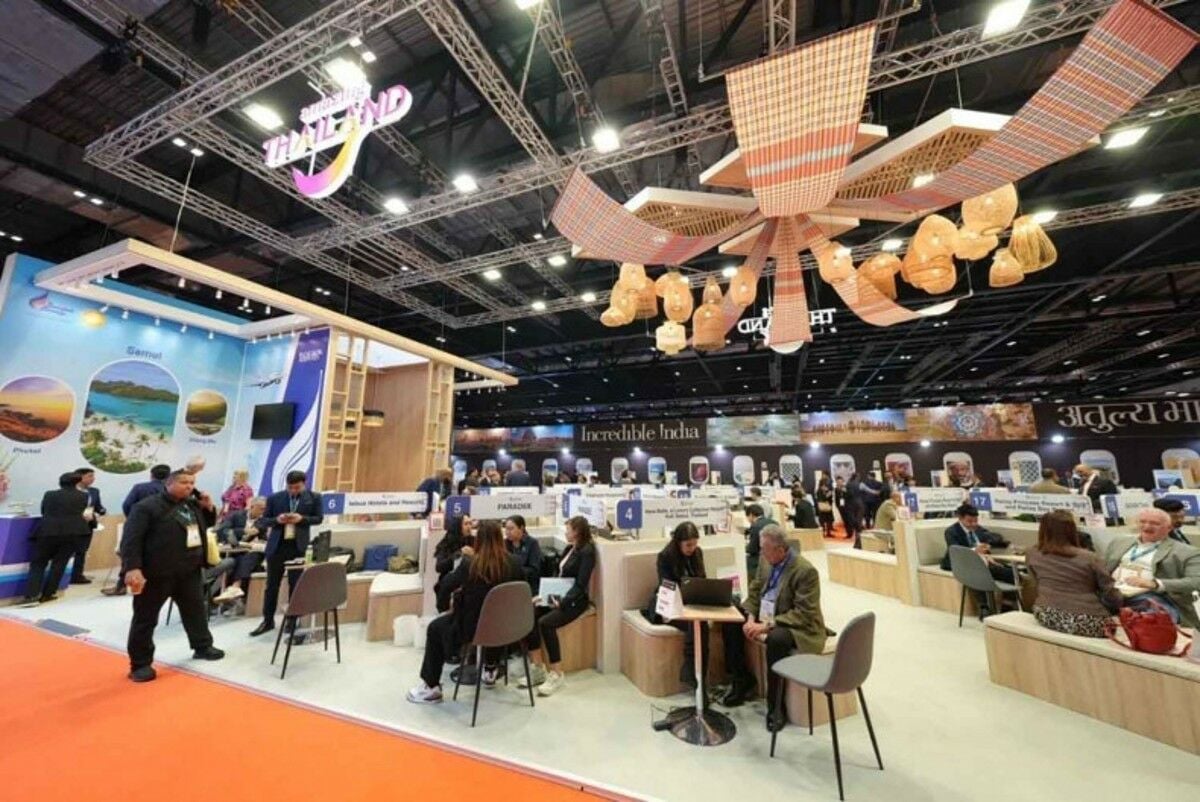Thailand targets 8 million European tourists to boost long-haul numbers

Thailand aims to attract eight million European tourists next year as part of a strategy to boost the number of long-haul visitors to a record 11 million, the Tourism and Sports Ministry announced. This move follows plans to collaborate with airlines and foreign ambassadors to ensure a full resumption of international flights.
Tourism and Sports Minister Sorawong Thienthong emphasised the potential for growth in Thai tourism.
“The future of Thai tourism is bright, dynamic and full of opportunities. We are investing in infrastructure, streamlining the visa process and creating new products and services to ensure that Thailand remains at the forefront of global tourism.”
These comments were made at the World Travel Market 2024, held in London from November 5 to 7, one of the largest tourism trade shows globally.
After the event, Sorawong plans to meet with foreign ambassadors from key markets such as the UK, Germany, Eastern Europe, and the Middle East, alongside airline representatives, to discuss preparations for the 2025 high season. The ministry seeks to work with other government departments, including the Transport and Finance Ministries, to implement subsidy programmes, such as fuel price and tax reductions for airlines.
Thailand expects to welcome 9.6 million long-haul tourists this year, with 7.3 million from Europe, according to the Tourism Authority of Thailand (TAT). With next year’s target, the country anticipates generating over 896 billion baht in revenue, accounting for 40% of the total 2.2 trillion baht in foreign receipts.
The TAT facilitated participation for 42 tourism operators at the WTM to engage with the UK, European, and other long-haul markets. The agency projects at least 950 business meetings during the event, potentially generating over 898 million baht.
Princess Ubolratana was also present at the event, promoting Thailand’s soft power and sustainable tourism initiatives.
Local sustainable tourism
Nithi Subhongsang, Managing Director of Nutty’s Adventures, a Thai destination management company, noted that European tourists form the core clientele, particularly small tour groups interested in local experiences and responsible tourism. Nithi expressed optimism about revenue recovery, expecting it to reach 80% of pre-pandemic levels due to robust demand from Europe, despite challenges such as high inflation and geopolitical tensions.
He urged the government to maintain policy continuity and promote second-tier cities to distribute income to local communities, thus preventing overtourism in popular destinations.
Sam Collins, product manager for Far East of Best at Travel, a UK-based luxury outbound tour operator, highlighted Thailand’s reputation for warm hospitality and affordability. Last year, the company facilitated over 4,000 UK tourists’ visits to Thailand, generating more than £8 million (around 351 million baht). Thailand ranked as the third most popular destination for UK tourists, following the Maldives and Dubai, accounting for approximately 15% of their business.
Collins mentioned a shift in tourist preferences towards less-crowded destinations like Koh Lipe, Koh Samet, Koh Tao, and Khao Lak, moving away from major cities such as Phuket, Samui, and Krabi. He suggested that the Thai government should enhance transportation infrastructure, especially railways, and support airlines to increase direct international flights.
THAI chief commercial officer Korakot Chatasingha confirmed the airline’s initiative to promote Bangkok as a tourism and aviation hub for European visitors travelling to other regional destinations. European flights are expected to contribute about 30% of the airline’s revenue this year.
Flight frequency will rise to 91 per week in December, with Belgium added to the schedule, up from the current 84 weekly flights. The airline’s average load factor for European routes remains strong at over 80%, with London being the only destination offering first-class service, reported Bangkok Post.
By 2025, THAI plans to maintain at least the same flight frequency for European routes with its fleet of 88 aircraft.
What Other Media Are Saying
- Travel and Tour World highlights Thailand’s ambitious target of 40 million international visitors by 2025, focusing on cultural tourism, expanded air routes and sustainable practices to boost economic yield and visitor experience. (read more)
- VN Express reports Thailand’s tourism sector thriving with 29.08 million foreign visitors this year, bolstered by visa-free policies and biometric systems, aiming for 36.7 million arrivals by year-end. (read more)
Frequently Asked Questions
Here are some common questions asked about this news.
Why is Thailand focusing on attracting more European tourists?
Thailand seeks to boost long-haul visitor numbers and diversify its tourism market, enhancing economic growth and stability.
How might Thailand’s tourism plans impact local communities?
Promoting second-tier cities could distribute income more evenly, reducing overtourism in popular areas and benefiting local economies.
What if Thailand successfully increases its long-haul tourist numbers?
This success could lead to significant revenue growth, further investment in tourism infrastructure, and enhanced global tourism standing.
How could geopolitical tensions affect Thailand’s tourism goals?
Tensions may impact travel preferences and economic conditions, challenging Thailand’s ability to meet its ambitious tourist and revenue targets.
What role does sustainable tourism play in Thailand’s strategy?
Sustainable tourism initiatives aim to attract responsible travellers, preserve Thailand’s natural beauty, and promote long-term economic benefits.
Latest Thailand News
Follow The Thaiger on Google News:


























